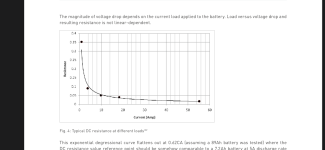Hi friends,
I would like to know how can we calculate the maximum short circuit current?
Can we calculated based on maximum discharge rate in datasheet? for example if max. dis. rate is 8C and cell capacity is 20Ah it means our max. short circuit current can be 20*8=160A?
Is it right?
I would like to know how can we calculate the maximum short circuit current?
Can we calculated based on maximum discharge rate in datasheet? for example if max. dis. rate is 8C and cell capacity is 20Ah it means our max. short circuit current can be 20*8=160A?
Is it right?


